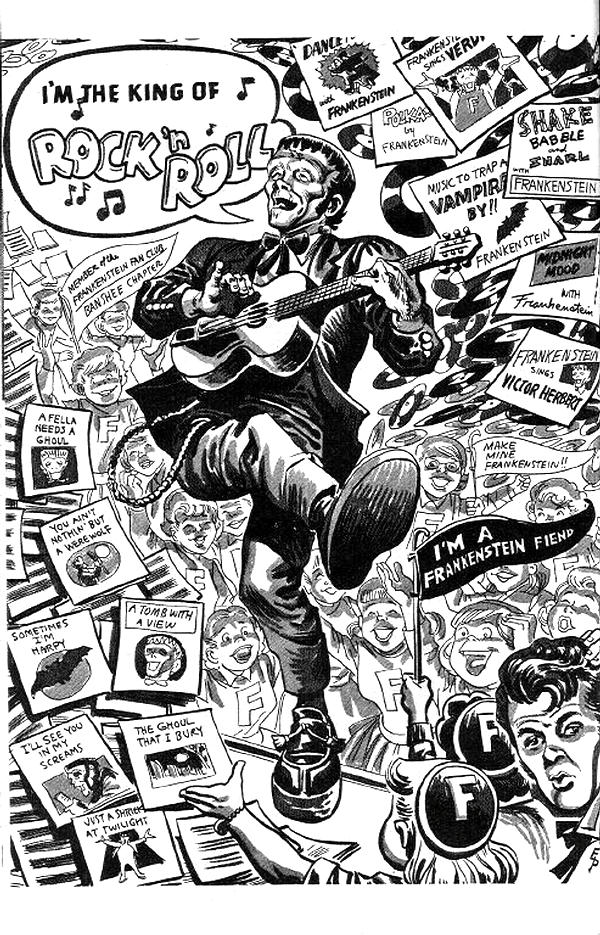 Number 153
Number 153 Son of Frankenstein Friday…again
Yet another in our on-again-off-again series featuring our favorite monster.
This is a diverse group: a Garbage Pail Kids card, a Marvel "Classic," a Joe Maneely satire strip from Cracked, an indy comic with a famous cover artist and two covers by Dick Briefer. There's even a snack to nibble on while you look at all of this. The Kellogg's Monster Fruit Flavored Snacks I bought last Halloween. Hurry and eat them, though…the expiration date is tomorrow, June 30, 2007.
For a time in the 1970's Marvel Comics had their own line of Classics Comics, with art usually done by the Filipino artists that took over comics for a time during that era. This was a rush job by Dino Castrillo, an artist I'm not familiar with. Despite the visualization of an ugly monster on the cover by artists Gene Colan and Ernie Chua (Chan), Castrillo's monster is actually--gasp--handsome.
 Not so handsome is John Pound's Garbage Pail Kid Frankenstein. Jeez, is that a cat he's stomping? Don't tell PETA, please. I don't need any trouble, and it's all Pound's fault, anyway.
Not so handsome is John Pound's Garbage Pail Kid Frankenstein. Jeez, is that a cat he's stomping? Don't tell PETA, please. I don't need any trouble, and it's all Pound's fault, anyway. Tomb Tales was a black and white homage to horror comics published in the late '90s. This is issue #7, from 1999, with a cover by none other than the great Jack Davis! I don't know how the guy swung it, or how much he paid the artists, but he used other EC artists for other covers. Check out his website for all of the covers. Not only does Davis do a great job on the Frankenstein monster, he includes Dracula, the Wolfman and even the Gillman. A regular Universal Monsters gang.
Tomb Tales was a black and white homage to horror comics published in the late '90s. This is issue #7, from 1999, with a cover by none other than the great Jack Davis! I don't know how the guy swung it, or how much he paid the artists, but he used other EC artists for other covers. Check out his website for all of the covers. Not only does Davis do a great job on the Frankenstein monster, he includes Dracula, the Wolfman and even the Gillman. A regular Universal Monsters gang. Click on pictures for full-size images.
Click on pictures for full-size images. From an old 1950's Cracked magazine comes Frankenstein by Joe Maneely. Joe did a much better version in an old issue of Atlas Comics' Menace.* I scanned the story from a reprint in Cracked Monster Party #2, from 1989. If you're getting eyestrain from trying to read the small type, don't feel bad. I've read it and it's not worth the trouble.
Finally, two great covers by the master of the funny Frankenstein, Dick Briefer. These issues of Prize Comics are from 1947.
*You can see that story if you click on Joe's name in the labels under this posting.








































































